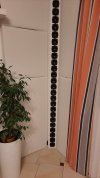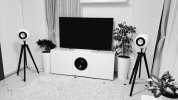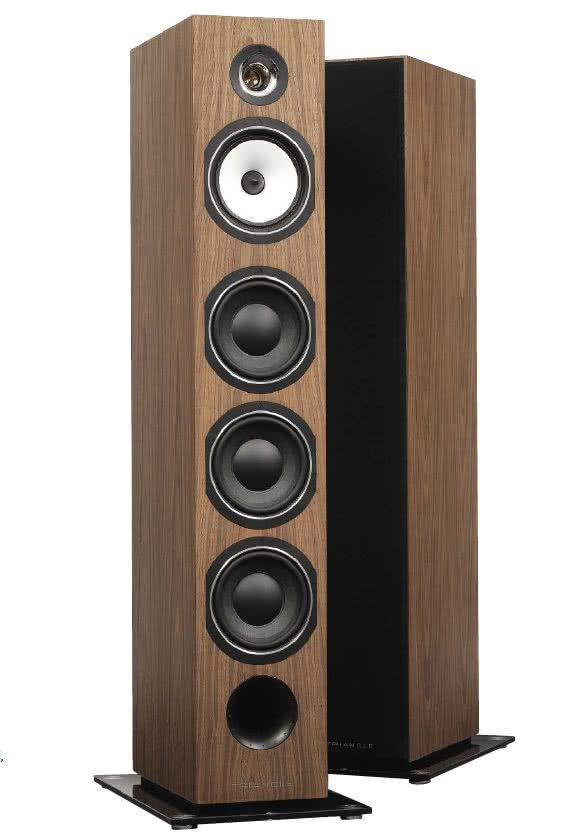It’s not a problem to use very largespeakers in small rooms. The speaker you showed has three bassdrivers with a combined membrane area of about 450 cm². If theyreach very low frequencies, for example down to 40 Hz, they willexcite all the room resonances, which can boost the sound by up to+10 dB. This makes the bass overwhelming, and you’ll need to adjustthe equalization to enjoy the music playback properly.
Recently, I was out and came across ahi-fi store with interesting speakers that looked almost like yours.I asked the seller to demonstrate them for me. He warned me that theymight be too big for the room. Indeed, the bass was unbearable atfirst. I went over to the amplifier, turned the bass control knobcounterclockwise to the 9 o’clock position, and suddenly thespeakers sounded normal with excellent bass reproduction. Why isthat?
Bass drivers need heavy membranes,which means they transfer a lot of energy into the room. This excitesroom resonances significantly. What’s the benefit of heavymembranes? After equalization, they sound very mature, as if the drumkit were right there in your home. In simple terms, they deliver moreenergy into the room, and that’s a lot of fun.
Recently, I was out and came across ahi-fi store with interesting speakers that looked almost like yours.I asked the seller to demonstrate them for me. He warned me that theymight be too big for the room. Indeed, the bass was unbearable atfirst. I went over to the amplifier, turned the bass control knobcounterclockwise to the 9 o’clock position, and suddenly thespeakers sounded normal with excellent bass reproduction. Why isthat?
Bass drivers need heavy membranes,which means they transfer a lot of energy into the room. This excitesroom resonances significantly. What’s the benefit of heavymembranes? After equalization, they sound very mature, as if the drumkit were right there in your home. In simple terms, they deliver moreenergy into the room, and that’s a lot of fun.




